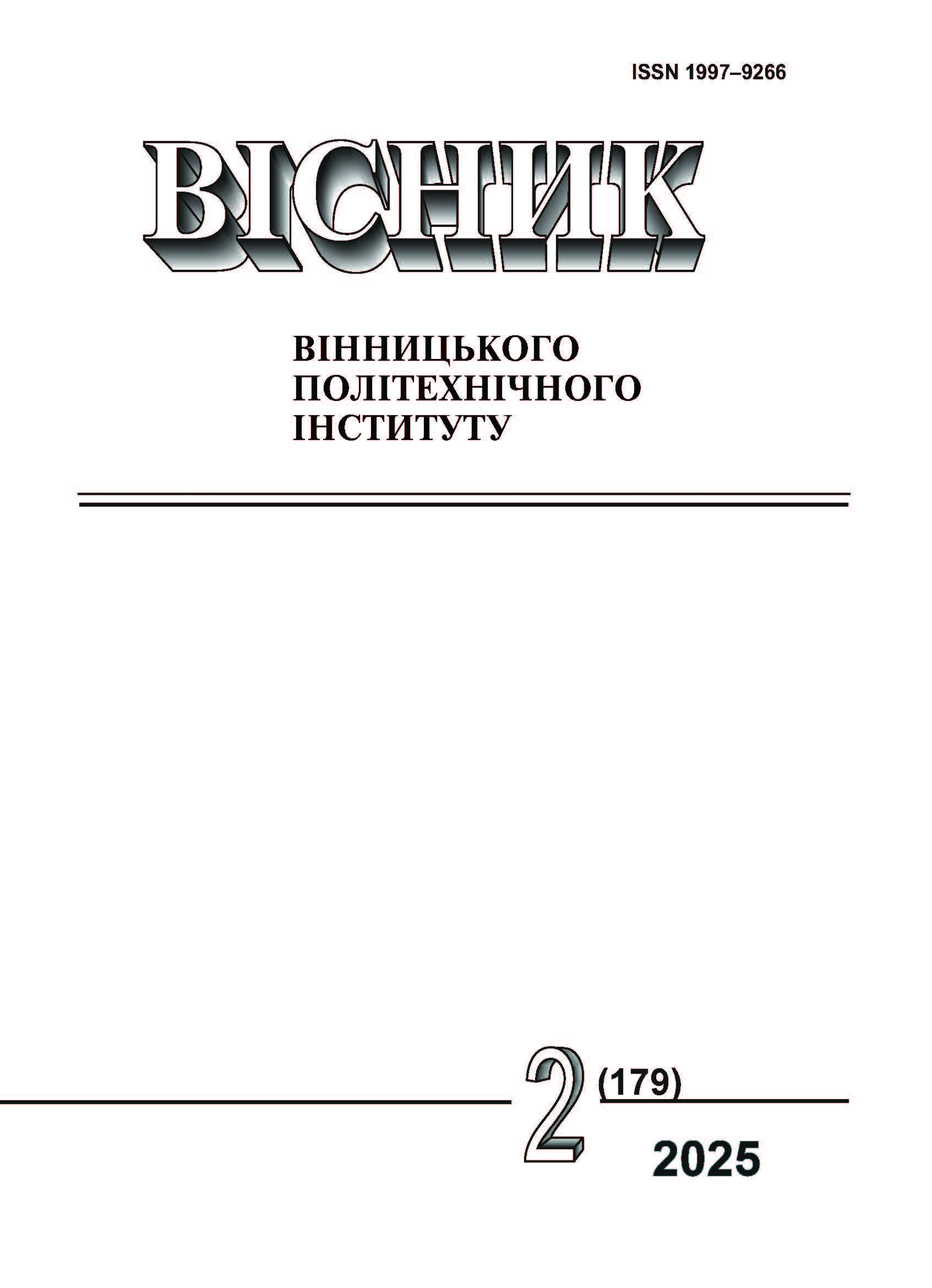АЛГОРИТМ ТРАСУВАННЯ ПРОМЕНІВ НА ОСНОВІ МЕТОДУ SCREEN SPACE RAY MARCHING
DOI:
https://doi.org/10.31649/1997-9266-2025-179-2-132-137Ключові слова:
комп’ютерна графіка, інтерактивний рендеринг, трасування променів, маршування променів у просторі екрануАнотація
Трасування променів є дуже важливою операцією в сучасній комп’ютерній графіці, яка дає змогу здійснювати фотореалістичний рендеринг віртуальних середовищ з високим рівнем точності моделювання взаємодії світла з геометричними об’єктами. Відстежуючи шлях окремих променів світла, бібліотеки рендерингу здатні обчислювати дзеркальні відображення, тіні, заломлення світла та глобальне освітлення, що забезпечує високу якість зображення. Ця технологія є невід’ємною частиною програмного забезпечення для комп’ютерного моделювання, створення анімаційних фільмів та кінематографічних ефектів, а також комп’ютерних ігор та інших інтерактивних графічних програм, де попит на реалістичні візуальні ефекти продовжує зростати. Розвиток апаратних можливостей графічних процесорів, зокрема поява підтримки апаратного прискорення трасування променів, значно підвищує продуктивність операції трасування. Проте трасування променів залишається слабкою ланкою у ефективності більшості алгоритмів, які використовуються в сучасних бібліотеках рендерингу. У зв’язку з цим оптимізація трасування променів є актуальним напрямком досліджень.
Метою цієї роботи є розробка реалізації методу маршування променів у просторі екрану, здатної визначити коректний результат трасування променя у разі коли буфер глибини містить необхідну для цього геометричну інформацію про середовище. Представлена реалізація цього методу є одночасно ефективною та забезпечує хорошу точність результатів. Для підтвердження результатів і вимірювання продуктивності отриманої реалізації проводиться експериментальне тестування. Дані, отримані на основі цих спостережень, доводять актуальність використання нашої реалізації в гібридній системі трасування променів, яка використовує метод маршування променів у просторі екрану, щоб уникнути виконання повільного апаратного трасування променів для частини запитів трасування.
Посилання
M. Pharr, W. Jakob, and G. Humphreys, Physically Based Rendering: From Theory to Implementation, 3rd ed., San Francisco, CA, USA: Morgan Kaufmann Publishers Inc., 2016.
J. Pineda, “A parallel algorithm for polygon rasterization’,” SIGGRAPH Comput. Graph., vol. 22, no. 4, pp. 17-20, 1988.
T. Whitted, “An improved illumination model for shaded display’,” Commun. ACM, vol. 23, no. 6, pp. 343-349, 1980.
M. McGuire, and M. Mara, “Efficient GPU Screen-Space Ray Tracing’,” Journal of Computer Graphics Techniques (JCGT), vol. 3, no. 4, pp. 73-85, 2014.
Y. Uludag, “Hi-Z Screen-Space Cone-Traced Reflections’,” in GPU Pro 5: Advanced Rendering Techniques (1st ed.), A K Peters/CRC Press, 2014, ch. 2.4, pp. 149-192.
T. Theoharis, G. Papaioannou, and A. Karabassi, “The Magic of the Z-Buffer,” a Survey, 01. 2001.
T. Willberger, C. Musterle, and S. Bergmann, “Deferred Hybrid Path Tracing: High-Quality and Real-Time Rendering with DXR and Other APIs’,” in E. Haines, T. Akenine-Möller. Ray Tracing Gems. Apress, Berkeley, CA, USA, 2019, pp. 475-492.
AMD FidelityFX Single Pass Downsampler (SPD). AMD GPUOpen. [Online]. Available: https://gpuopen.com/fidelityfx-spd/ .
##submission.downloads##
-
pdf
Завантажень: 40
Опубліковано
Як цитувати
Номер
Розділ
Ліцензія

Ця робота ліцензується відповідно до Creative Commons Attribution 4.0 International License.
Автори, які публікуються у цьому журналі, згодні з такими умовами:
- Автори зберігають авторське право і надають журналу право першої публікації.
- Автори можуть укладати окремі, додаткові договірні угоди з неексклюзивного поширення опублікованої журналом версії статті (наприклад, розмістити її в інститутському репозиторії або опублікувати її в книзі), з визнанням її первісної публікації в цьому журналі.
- Авторам дозволяється і рекомендується розміщувати їхню роботу в Інтернеті (наприклад, в інституційних сховищах або на їхньому сайті) до і під час процесу подачі, оскільки це сприяє продуктивним обмінам, а також швидшому і ширшому цитуванню опублікованих робіт (див. вплив відкритого доступу).





